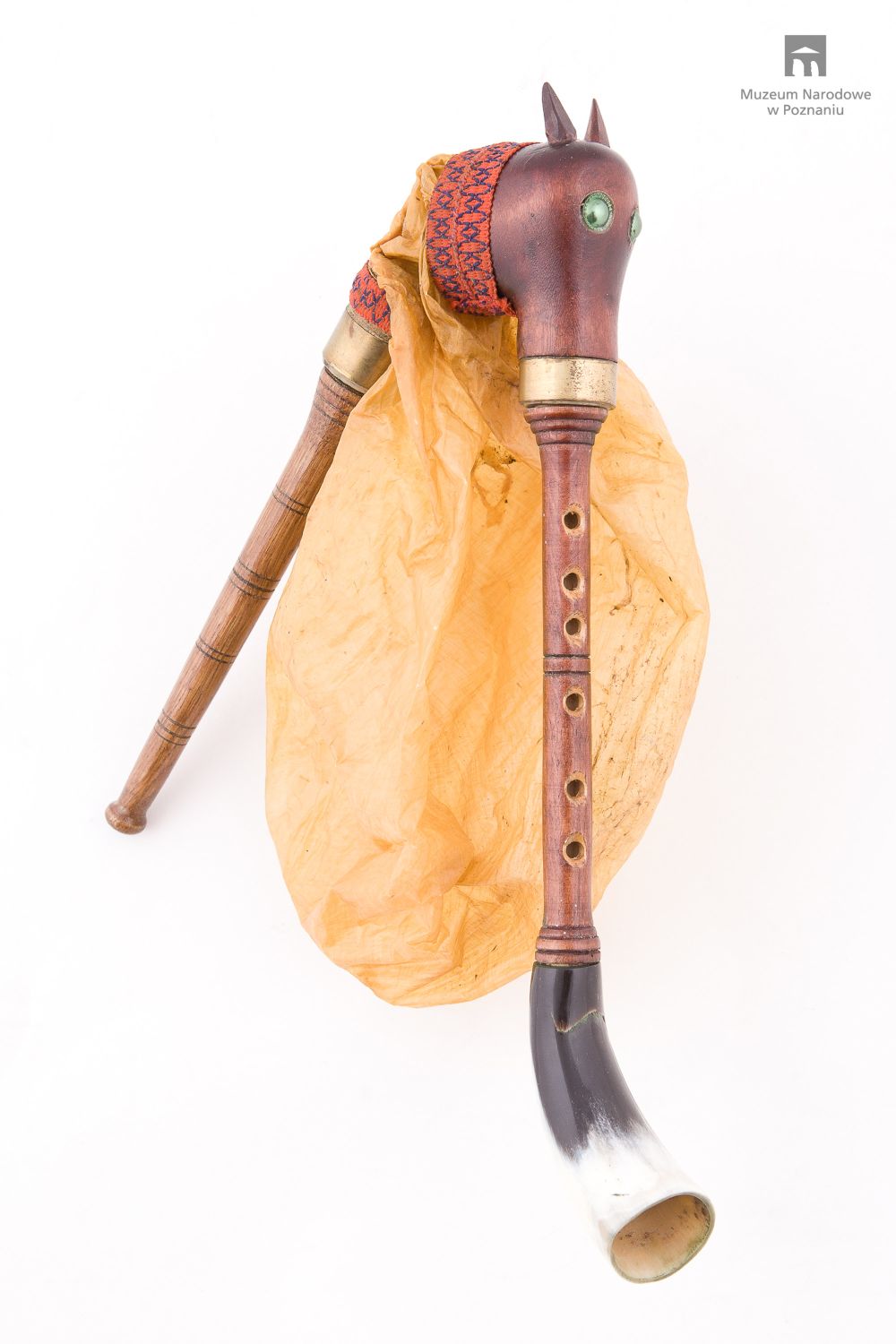bagpipe (bladder pipe)
bagpipe (bladder pipe)
Local name: siesieńki, sierszeńki, sieszynki, sieszynie, sierszynki, sierszynie, pancharzynaClassification: 4 Aerophones / 42 Wind instruments proper / 422 Reedpipes / 422.2 Reedpipes with single reeds (clarinets) / 422.21 Individual reedpipes with single reeds / 422.211 With cylindrical bore / 422.211.2 With fingerholes / 422.211.2-62 Single-reed chanter with cylindrical bore, with fingerholes, flexible air reservoir
Maker: Prządka Czesław
Date: 1987
Village / Town: Zbąszyń
Region: Greater Poland
Country: Poland
Owner: Ethnographic Museum, department of National Museum in Poznań
Inventory number: MNP E 6450
Description: a single voice bagpipe; mouth blown; bag made from an animal bladder; single-reed; cylindrical chanter; mouthpiece
Measurements: chanter 240 mm, mouthpiece 185 mm
Materials: wood, reed, bladder, horn, cloth
Sound compass, tuning: formerly not established, after World War II in west Greater Poland the instrument was supplied with a chanter from the white goat tuned in E-flat and with a diatonic scaleb♭ – c' – d' – e♭' – f' – g' – a♭' – b♭' – c''
Performance practice: a shepherd's instrument, used at the first stage of learning how to play the bagpipe; reactivated after World War II for didactical purposes in the S. Moniuszko Music School in Zbąszyń, partly used by artists of the folk revival, too
Catalog card by: Aneta Skibińska / Zbigniew J. Przerembski
Wiwat, a wedding dance; Jan Pajchrowski (b. 1911, Gnin), sierszeńki; rec. Warsaw 1949; Sources of Polish Folk Music
<< Back










